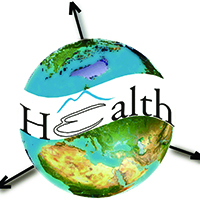A spatiotemporal analysis of the impact of the COVID-19 outbreak on noise pollution in Tehran, Iran

Accepted: 4 September 2022
HTML: 9
All claims expressed in this article are solely those of the authors and do not necessarily represent those of their affiliated organizations, or those of the publisher, the editors and the reviewers. Any product that may be evaluated in this article or claim that may be made by its manufacturer is not guaranteed or endorsed by the publisher.
Authors
Noise pollution is one of the non-natural hazards in cities. Long-term exposure to this kind of pollution has severe destructive effects on human health, including mental illness, stress, anxiety, hormonal disorders, hypertension and therefore also cardiovascular disease. One of the primary sources of noise pollution in cities is transportation. The COVID-19 outbreak caused a significant change in the pattern of transportation in cities of Iran. In this article, we studied the spatial and temporal patterns of noise pollution levels in Tehran before and after the outbreak of this disease. An overall analysis from one year before until one year after the outbreak, which showed that noise pollution in residential areas of Tehran had increased by 7% over this period. In contrast, it had diminished by about 2% in the same period in the city centre and around Tehran’s Grand Bazaar. Apart from these changes, we observed no specific pattern in other city areas. However, a monthly data analysis based on the t-test, the results show that the early months of the virus outbreak were associated with a significant pollution reduction. However, this reduction in noise pollution was not sustained; instead a gradual increase in pollution occurred over the following months. In the months towards the end of the period analysed, noise pollution increased to a level even higher than before the outbreak. This increase can be attributed to the gradual reopening of businesses or people ignoring the prevailing conditions.
How to Cite

This work is licensed under a Creative Commons Attribution-NonCommercial 4.0 International License.
PAGEPress has chosen to apply the Creative Commons Attribution NonCommercial 4.0 International License (CC BY-NC 4.0) to all manuscripts to be published.

 https://doi.org/10.4081/gh.2022.1114
https://doi.org/10.4081/gh.2022.1114




